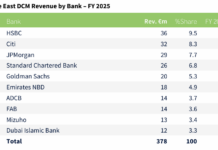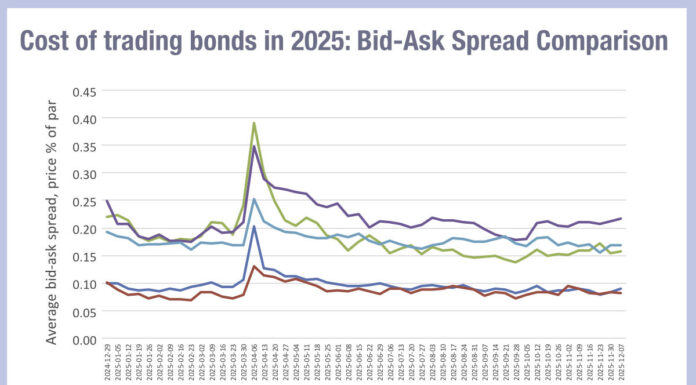With issuance at near record highs in the first week of the year, credit market traders are keen to make more effective use of their time in intermediating new issues. Today, newly issued debt securities are often cut off from the rest of a firm’s trading operations by operational barriers.
If an electronic platform, such as S&P’s Investor Access or DirectBooks, is used to communicate order information on a newly issued bond from the dealers to the investors, that can also be connected directly to an investment manager’s order management system (OMS), assuming that such an integration has been established by the two platform providers.
That will reduce risk in the process as the buy-side desk no longer has to manually copy information from one system to another, increasingly the efficiency of engaging in the process.
However, newly issued bonds do not have an identifier – be that a Committee on Uniform Securities Identification Procedures (CUSIP) number or an International Securities Identification Number (ISIN) – and that prevents them from being identified in a standardised way in trading or investment systems.
That is a real challenge for investment firms as they may agree to acquire bonds but then face a delay in being able to trade them or otherwise model them.
Where bonds need to be assessed against existing issues, that modelling is crucial to determining the potential value, risks and challenges within current holding. That includes aspects tracked by the trading desk such as supporting liquidity in a portfolio, finding relative value opportunities, and tracking liquidity after the event while the bonds are on the run.
Being able to trade bonds before they are listed or first priced, known as trading in the ‘grey market’, creates an additional liquidity leg in trading which can be useful for both buyers and sellers. If an asset manager finds they were unable to get the allocation they wanted in the primary market, the grey market can provide a second bite of the apple. Some investment firms, typically hedge funds, may be able to profit from selling-on an allocation in this way thereby, delivering extra returns for investors.
Finding a way to set up an identifier early in the process comes down to two models. The first is to take an identifier from a third party platform as an alternative to an ISIN or CUSIP which can then be supplemented by an official identifier when it becomes available. The second is to have a central securities depositary issue the ISIN or CUSIP earlier in the process via a primary platform which can then be loaded into an OMS and / or a trading platform to facilitate direct trading with counterparties immediately.
This step not only adds certainty to the workflow by ensuring an identifier is available early and has been directly flowed into the trading process, but also facilitates rapid engagement with the wider market to seize those liquidity opportunities.
The savings from a trading perspective in terms of time are a positive, but equally having a straight-through-processing of data reduces the middle and back office challenges that are needed to reconcile order allocations, for both dealers and investment firms.
Consequently, engaging with firms who have the capacity to support early identifier issuance can be a valuable exercise for a trading desk’s operations team.
©Markets Media Europe 2024
©Markets Media Europe 2025















